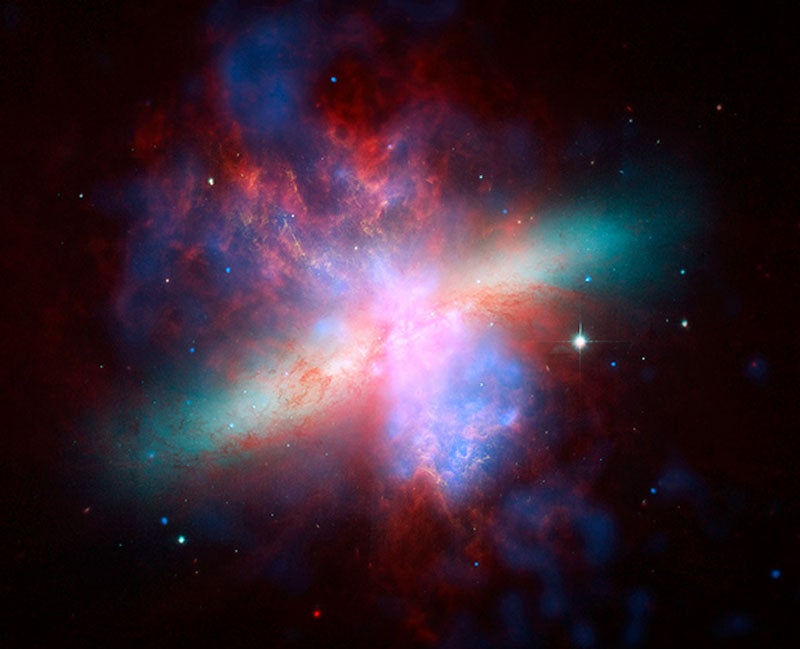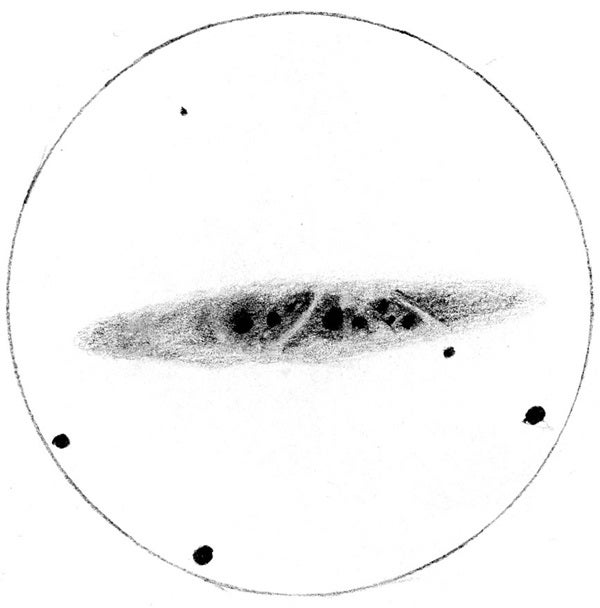Menard first noticed the phenomenon at the 2010 WSP while enjoying a view of M82 through his 22-inch f/4 Dobsonian reflector at 321x. Among the numerous tendrils of dust near the galaxy’s eruptive center, his eye caught sight of a curious “dark bay with a solitary star near its center.” Under sharper focus, he detected several dimmer “very small” stellar points nearby.
Suddenly, these points “winked out of view,” only to be replaced by others “ever so slightly peripheral” to the first ones. Menard and his companions could see anywhere from six to a few dozen of these “twinkling” lights.
Some of this, some of that?
I proffer the possibility of a brightness-contrast illusion, coupled with flickering effects resulting from the shifting of averted vision while scanning.
Certainly, the view of M82 through Menard’s large and finely collimated reflector was spectacular — a mottled mess of light patches and dark streaks squeezed into a fuzzy cigar-shaped disk that dominated the field of view. The veins of darkness formed an irregular scrim through which mismatched patches of extragalactic light burned forth in a linear (though slightly wavy) fashion.
The effect appears roughly linear because we see the enhanced spots along the major axis of this nearly edge-on system, like dew drops reflecting sunlight on a blade of grass. The “stars” turn on and off successively in brightness because we’re shifting our gaze from averted to more direct vision, respectively, during the visual sweeps.
In 2011, Menard and his wife, Lynne, observed a similar twinkling network of stellar points around the star formation areas in the Box Galaxy (NGC 4449) in Canes Venatici. “Again,” he said, “we’ve observed this galaxy numerous times before in various apertures and magnifications, and we had never seen this.”
I’d like to know if you can detect this phenomenon in M82, or other galaxies, through smaller apertures. As always, let me know what you see and think at someara@interpac.net.












